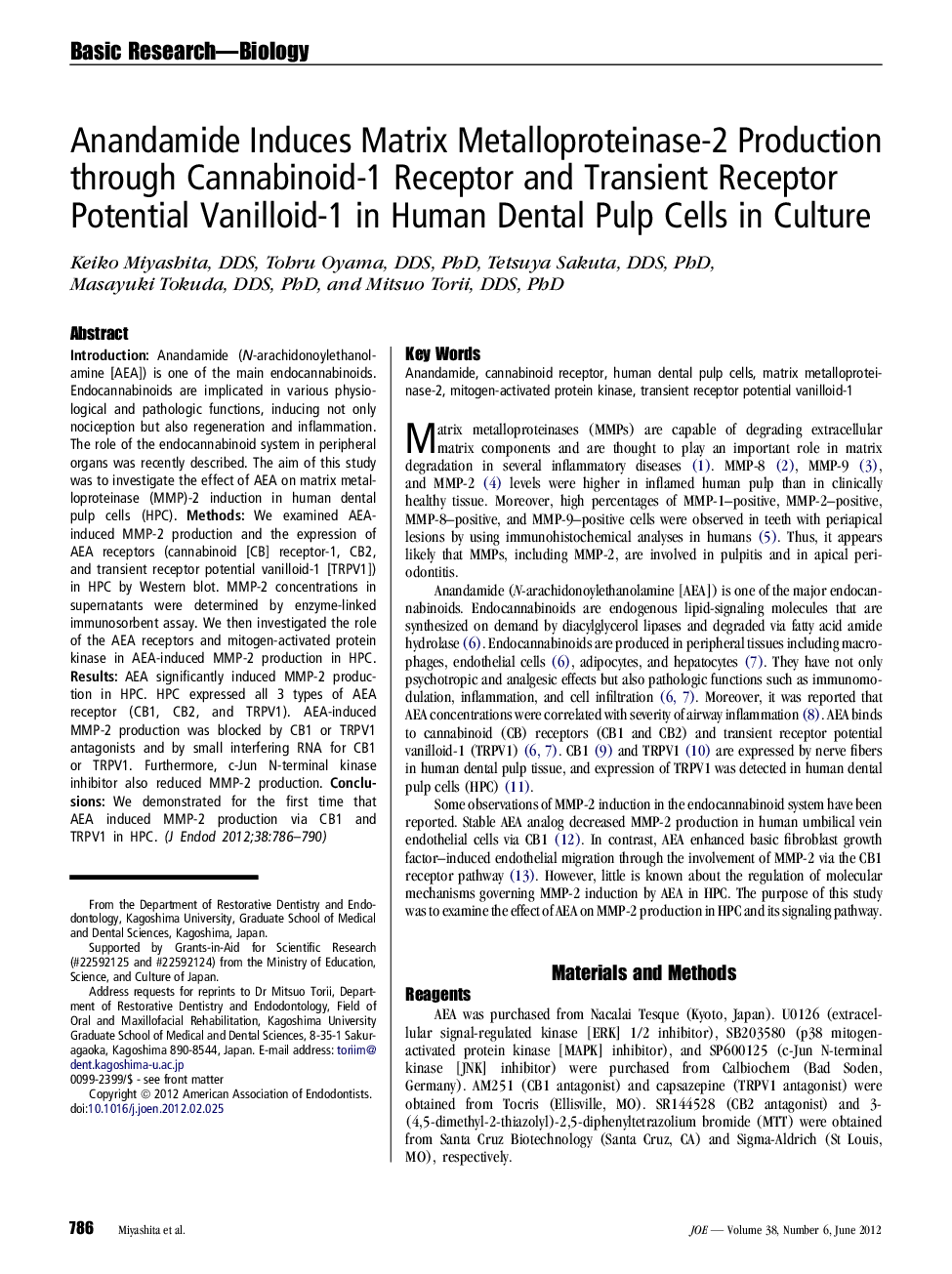| Article ID | Journal | Published Year | Pages | File Type |
|---|---|---|---|---|
| 3147303 | Journal of Endodontics | 2012 | 5 Pages |
IntroductionAnandamide (N-arachidonoylethanolamine [AEA]) is one of the main endocannabinoids. Endocannabinoids are implicated in various physiological and pathologic functions, inducing not only nociception but also regeneration and inflammation. The role of the endocannabinoid system in peripheral organs was recently described. The aim of this study was to investigate the effect of AEA on matrix metalloproteinase (MMP)-2 induction in human dental pulp cells (HPC).MethodsWe examined AEA-induced MMP-2 production and the expression of AEA receptors (cannabinoid [CB] receptor-1, CB2, and transient receptor potential vanilloid-1 [TRPV1]) in HPC by Western blot. MMP-2 concentrations in supernatants were determined by enzyme-linked immunosorbent assay. We then investigated the role of the AEA receptors and mitogen-activated protein kinase in AEA-induced MMP-2 production in HPC.ResultsAEA significantly induced MMP-2 production in HPC. HPC expressed all 3 types of AEA receptor (CB1, CB2, and TRPV1). AEA-induced MMP-2 production was blocked by CB1 or TRPV1 antagonists and by small interfering RNA for CB1 or TRPV1. Furthermore, c-Jun N-terminal kinase inhibitor also reduced MMP-2 production.ConclusionsWe demonstrated for the first time that AEA induced MMP-2 production via CB1 and TRPV1 in HPC.
